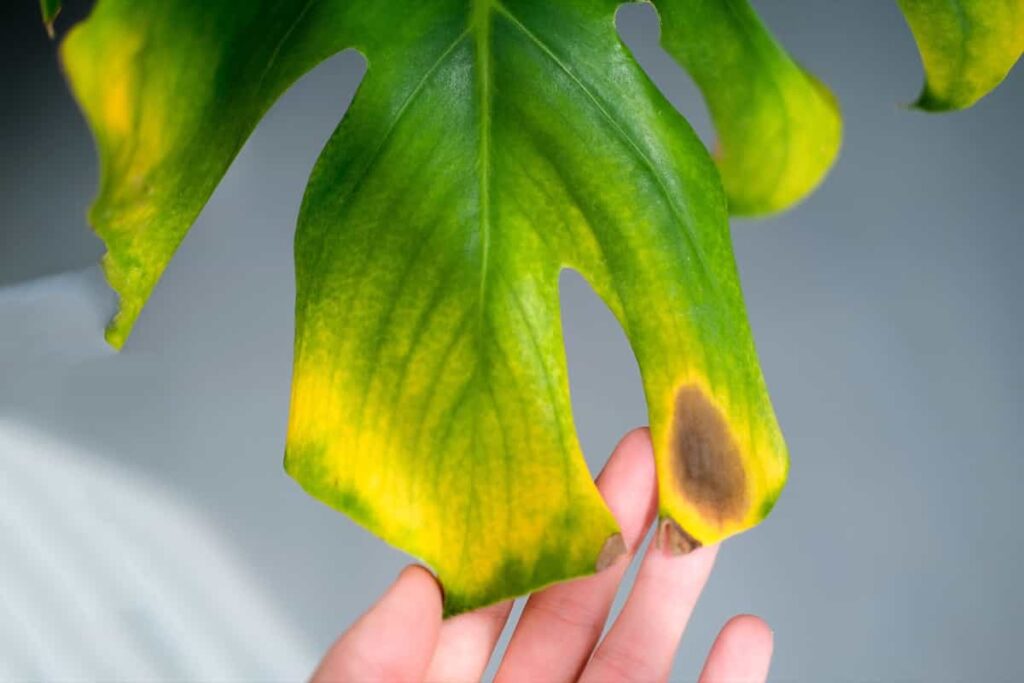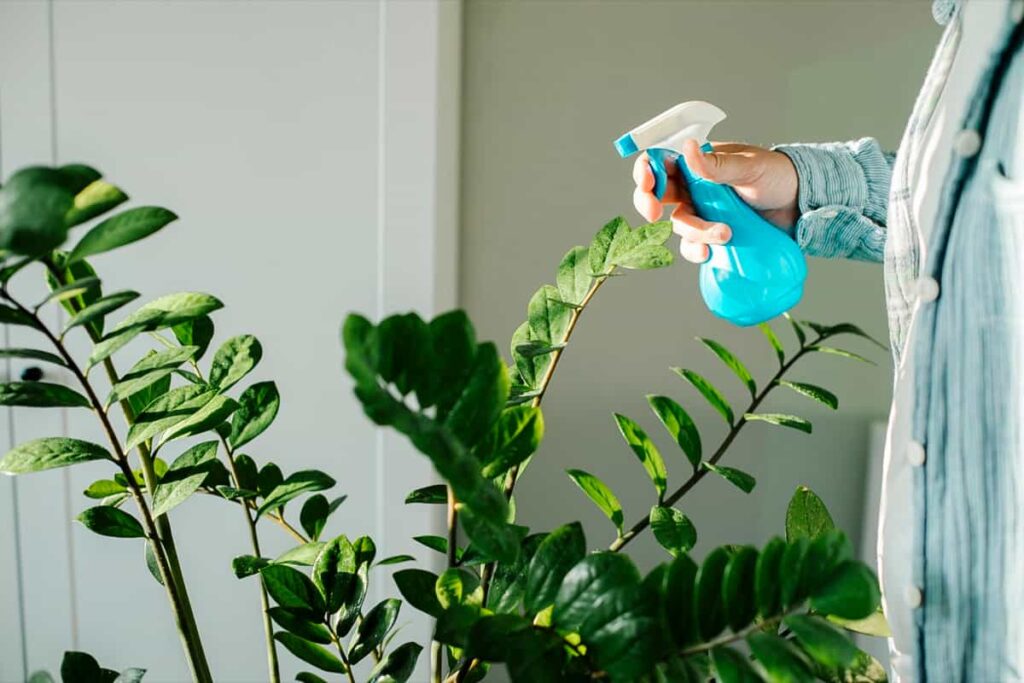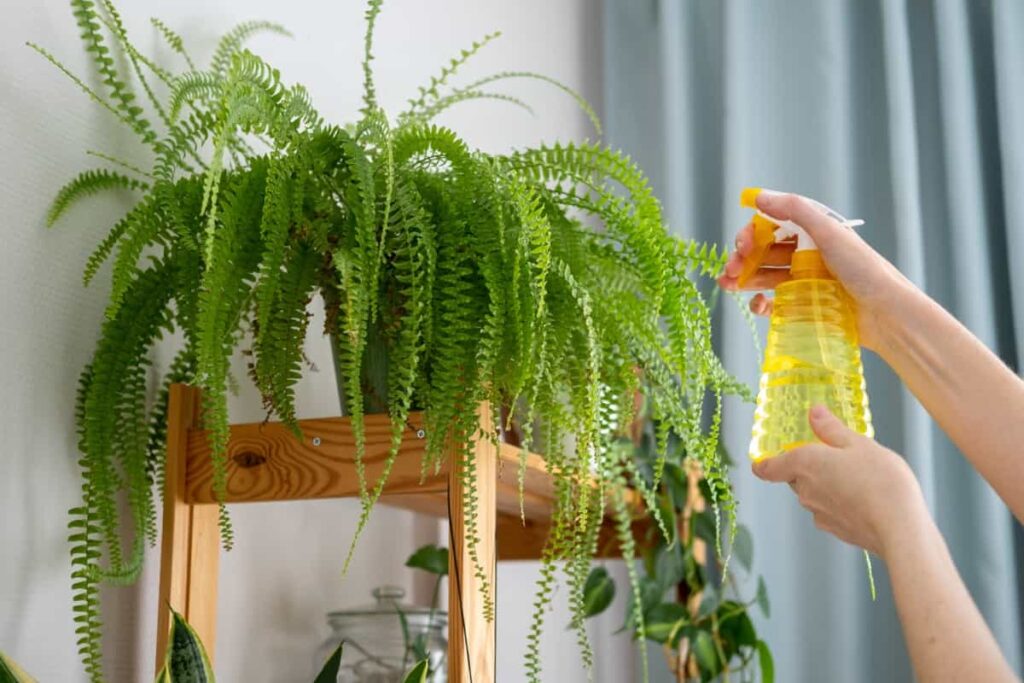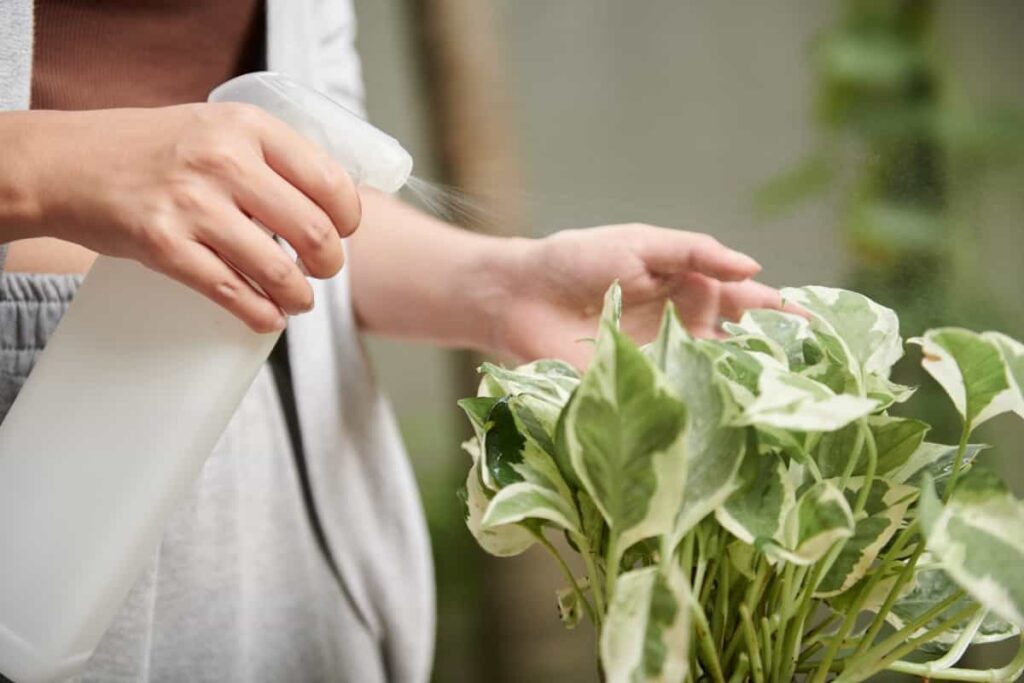Discover eco-friendly and effective ways to combat leaf spots in your garden. Use homemade sprays that are gentle on plants but tough on fungus. Create a potent fungicide using household ingredients for a budget-friendly solution. Embrace nature’s power with an organic concoction that naturally fights leaf spot issues. Nurture your garden organically with a leaf cure that promotes plant well-being.

Use an eco-friendly spray to protect plants and the environment. Ensure your garden’s safety with a plant-friendly treatment. Create a home recipe for leaf fungus to promote a thriving garden. Use a non-toxic solution for leaf spot control. Simplify leaf spot control with an easy DIY solution. Address leaf spot issues at home with a powerful remedy that nurtures plants back to health. Revitalize your garden with these natural solutions, ensuring a leaf-spot-free haven for your beloved plants.
Leaf Spots and Damage Symptoms
Leaf spots can differ in size, shape, and color depending on the type of pathogen and the host plant. They usually appear as circular or angular spots with different margins, sometimes with concentric rings or patterns. The spots may coalesce and cover large areas of the leaf, causing it to wilt, curl, or drop. Some pathogens may also produce spores, fruiting bodies, or ooze on the surface of the spots. Leaf spots can affect both young and mature leaves and may also spread to stems, flowers, or fruits.
Top 10 Homemade Sprays for Leaf Spots
Chamomile Tea Spray
Chamomile tea spray is a natural remedy that can help prevent or reduce fungal leaf spots. Chamomile tea has antifungal properties that can inhibit the growth of some fungi, such as Alternaria, Cercospora, and Septoria. To make chamomile tea spray, steep 4 teaspoons of dried chamomile flowers in 4 cups of boiling water for 20 minutes. Strain the tea and cool. Transfer to a spray bottle, and spray the affected leaves every 7 to 10 days until the symptoms subside.
Hydrogen Peroxide Solution
Hydrogen peroxide solution is another natural treatment that can help control fungal and bacterial leaf spots. Hydrogen peroxide is a powerful oxidizer that can kill pathogens and disinfect wounds. It can also boost the plant’s immunity and oxygen levels. To make a hydrogen peroxide solution, mix 1 tablespoon of 3% hydrogen peroxide with 1 quart of water. Spray the solution on the infected leaves every 3 to 5 days until the spots disappear.
In case you missed it: Top 10 Homemade Sprays for Flea Beetles: Easy DIY Solutions for Getting Rid of Flea Beetles

Cornstarch Spray
Cornstarch spray is a simple and effective way to prevent fungal leaf spots. Cornstarch acts as a barrier that prevents the spores from germinating and infecting the leaves. It also absorbs excess moisture that can favor fungal growth. To make cornstarch spray, dissolve 1 tablespoon of cornstarch in 1 pint of water. Spray the solution on both sides leaves before the spores land or when the first signs of infection appear.
Cinnamon Solution
Cinnamon solution is a natural antifungal agent that can help fight fungal leaf spots. Cinnamon contains cinnamaldehyde, a compound that inhibits fungal enzymes and cell membranes. It also has a pleasant aroma that can repel some insects that can transmit fungal spores. To make a cinnamon solution, mix 1 teaspoon of ground cinnamon with 4 cups of water. Boil the mixture for 5 minutes and cool. Strain the solution and spray it on the affected leaves every week until the spots are gone.
Epsom Salt Spray
Epsom salt spray is a beneficial supplement that can help improve plant health and resistance to leaf spots. Epsom salt is magnesium sulfate, a mineral essential for photosynthesis, chlorophyll production, and enzyme activity. It can also help balance the pH level of the soil and prevent nutrient deficiencies that can weaken the plant’s defense system. To make Epsom salt spray, dissolve 2 tablespoons of Epsom salt water. Spray the solution on the leaves once a month or when symptoms appear.
Potassium Bicarbonate Spray
Potassium bicarbonate spray is an effective fungicide that can help control powdery mildew, one of the most common fungal leaf spot diseases. Potassium bicarbonate raises the pH level of the leaf surface, making it unfavorable for fungal growth. It also dehydrates and kills the spores and hyphae of the fungus. To make potassium bicarbonate spray, mix 1 tablespoon of potassium bicarbonate with water. Add a dish soap to help the solution stick to the leaves. Spray the solution on both sides of the leaves every 7 to 14 days until no signs of powdery mildew remain.
In case you missed it: Top 10 Homemade Sprays for Grasshoppers: Easy DIY Solutions for Getting Rid of Grasshoppers

Sulfur Spray
Sulfur spray is a traditional fungicide that can help prevent or treat various fungal leaf spot diseases, such as anthracnose, rust, scab, and black spots. Sulfur interferes with fungal respiration and metabolism, causing cell death. It also creates an acidic environment that inhibits fungal spore germination. To make sulfur spray, mix 2 to 4 tablespoons of wettable sulfur with 1 gallon of water. Spray the solution on the leaves before the disease appears or at the first sign of infection. Repeat every 10 to 14 days as needed.
Clove Oil Spray
Clove oil spray is a natural antiseptic that can help combat bacterial leaf spots. Clove oil contains eugenol, a compound that has antibacterial and anti-inflammatory properties. It kills the bacteria and reduces the inflammation and tissue damage caused by the infection. To make clove oil spray, mix 1 teaspoon of clove oil and 4 cups of water. Add a few dish soap to help the solution adhere to the leaves. Spray the solution on the infected leaves every 3 to 4 days until the spots are gone.
Horsetail Tea Spray
Horsetail tea spray is an herbal remedy that can help strengthen the plant’s immune system and resistance to leaf spots. Horsetail is a plant that is rich in silica, a mineral that helps form strong cell walls and membranes. It also contains antioxidants, flavonoids, and saponins that can protect the plant from oxidative stress and fungal infections. To make horsetail tea spray, steep 1 ounce of dried horsetail in 1 quart of boiling water for 24 hours. Strain the tea and dilute it with 3 quarts of water. Spray the solution on the leaves every 2 weeks or when symptoms appear.
Oregano Oil Spray
Oregano oil spray is a potent antifungal and antibacterial agent that can help eliminate leaf spot pathogens. Oregano oil contains carvacrol and thymol, two compounds that can disrupt fungal and bacterial cell membranes and functions. It also has a strong aroma that can deter some insects that can spread the disease.
In case you missed it: How to Get Rid of Ants in Potted Plants: 10 Effective Ways to Control with Natural and Homemade DIY Pesticides

To make oregano oil spray, mix 1 teaspoon of oregano oil with 4 cups of water. Add dish soap to help the solution stick to the leaves. Spray the solution on the affected leaves every 5 to 7 days until the spots are gone.
Conclusion
These Top 10 Homemade Sprays provide accessible and effective solutions for banishing leaf spots. Embrace the simplicity of DIY remedies that prioritize plant health without harming the environment. Elevate your gardening experience with these natural, budget-friendly alternatives, ensuring vibrant and spot-free foliage in your cherished garden.
- Aquaponic Farming at Home: A Step-By-Step Guide
- Profitable Village Farming Business Ideas in 2024
- High-Yield Aquaculture: Fast-Growing Fish for Farming
- Effective Fish Pond Construction Techniques for Beginners
- Irrigation and Water Management in Pineapple Farming
- Blossom to Harvest: Mastering Flowering and Pollination in Papaya Farming
- Pig Fattening Essentials: From Selection to Sale for Beginners
- Raising Wagyu Cattle: A Complete Guide for Premium Beef Production
- Soil Types and Their Water Holding Capacity
